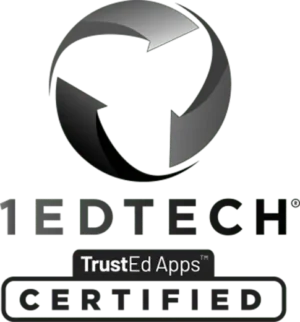
Cailin Minor continues her two-part series on teacher reluctance to coaching with her top strategies for combating reluctance and feeling “stuck.”
In my piece “The Causes of Coaching Reluctance”, I talked about the causes of reluctance in teachers when working with a coach. Reluctance is an iceberg with reluctant behaviors on top and deeper thoughts, beliefs, and needs below the surface. As you get to know teachers at a deeper level and analyze what might be holding them back, you can try to match coaching strategies to help them get “unstuck.”
Just like when we try to help students, there isn’t one magic strategy or tip that will resolve the conflict. One might do the job, or you might need a combination of strategies. Below are some strategies that I have found helpful when working with teachers reluctant to be coached.
Strategies for Getting “Unstuck”
1) Don’t seek out reluctant teachers when you are new
Avoiding reluctant teachers might seem contradictory to the purpose of this article, but when you or your coaching program is new, it’s something to consider. One piece of advice I got when I started coaching is to not start your coaching work by trying to convert reluctant teachers. Build your program around people who are excited about coaching or about your content area. Then you can spread your work from there.
I see a lot of new coaches immediately go after the most reluctant teacher and spend all of their energy trying to get them on board. It is usually fruitless work and very disheartening for the coach. Don’t be afraid to let those reluctant teachers go for a while. You might have more success circling back to them later.
2) Show, don’t tell
Sometimes people won’t believe something until they see it. We can explain our coaching program, the benefits, and the work we do until we are blue in the face. Sometimes people just need to experience a coaching cycle, see you model a lesson, have a reflective conversation with you, or participate in a workshop to see the benefits of coaching. Try to find a way for people to experience coaching. This might help them get over their hang ups or misconceptions.
3) Build your program with others and let the word spread
Sometimes teachers want to hear about the success of something from colleagues they trust, not just from the administration . . . or you. They might get on board when they hear their teammates had a great coaching cycle with you and found the work rewarding and helpful. Again, don’t be afraid to build your program with teachers who are keen to work with coaches and let the word spread on its own.
4) Adjust your style and preferences with different personalities
Everyone has different work personalities and styles. People may not want to work with a coach because they could perceive your professional style or preferences as different from their own. This is where we need to hold the mirror up and ask ourselves: “what we can do to help others get what they need.”
We can help make a person feel comfortable working with us by adjusting our style. When I work with teachers, I try to meet them on their playing field. I try to put away my preferences for learning and focus on theirs. Do they like to talk things out, jump in and try it out, or read about it first? You can put people at ease if they feel they get to work and learn in a way that is successful for them.
5) Hook teachers by finding something that interests them
When we write, we often begin with a hook: something to catch the reader’s interest and make them want more. We can apply this same concept to coaching. Maybe a reluctant teacher hasn’t found anything yet that has peaked their interest in your coaching work. Find out what they are passionate about, or a topic that has been on their mind, and approach them about some shared work. You may also try to integrate the topic into your existing coaching work.
6) Build shared leadership
Teachers want to feel valued and that their ideas and skills are respected and put to use. Find opportunities to build capacity in your coaching work. Not everything should be coming from you as if you are the source of all knowledge and skills. This is especially important when you have experienced teachers. Try creating situations where you ask others to lead, facilitate, share, model, and create. And, if you do start in more of a consultant role, make sure you plan for that gradual release of responsibility and independence.
7) Focus on collaborating instead of consulting
Sometimes a great “in” with reluctant teachers is to put aside coaching and consulting and focus on collaboration. Approach them as an equal collaborator and work on a task together. This way you can both get to know one another and begin from a place of respect.
8) Model vulnerability
Reluctance can come from our own insecurities. Maybe the teacher is afraid to admit they don’t know or understand something in front of their colleagues. Or, maybe they think coaching is for struggling teachers and they don’t want to be seen as someone who needs help. As a coach, we need to model vulnerability and its benefits. You can do this by admitting when you don’t know something, reaching out to others for support and collaboration, teaching a lesson in front of others and reflecting on what went well and what didn’t, and inviting feedback from the teachers.
9) Don’t make everything mandatory or chosen by you
When teachers are in the driver’s seat, there is usually less reluctance. Helping to shape their professional development, make their own choices, and have a strong voice in their coaching work, teachers will be less resistant. Give teachers choice and voice whenever you can and let them drive the work.
10) Be flexible
I can’t stress how important it is to learn how to be flexible—both in your thinking and in your actions. If people perceive you to be rigid, close minded, and judgemental, they will be reluctant to coaching. Of course you will have your beliefs and values as a coach, but if you are not willing to be open minded to others’ beliefs—and to set aside some of your preferences—then you will isolate those who are different from you. You have to set aside the black and white and embrace the gray. Set aside the impulse to think, “That is not what I would do,” and consider alternative pathways. Consider the benefits to choosing your battles. Get to what is at the core of your beliefs, and your school’s beliefs, and then learn to let some things go. Your coaching work can’t be about control.
Be Patient: Go Slow to Go Fast
Forming relationships, establishing trust, building your coaching program, and getting clients to buy-in takes time. There is no way around it. Sometimes teachers will dive right into working with a coach and others will take a while, dipping their toe in and waiting to acclimate to the surroundings. As I think about the reluctant teachers I have worked with, I can definitely say it took months—or even years—for both of us to move through our “stuckness” and form a strong coaching relationship.
Don’t skip the steps of getting to know them and putting in the effort of building a working relationship. Dig below the surface to see what is there, both for them and for yourself. You will find a pathway for working through reluctance.
About Our Guest Blogger
Cailin Minor is a literacy coach at Shanghai American School. She has been teaching overseas for the past 11 years in Korea, Thailand, Colombia, and China. She loves international education and the challenging and rewarding work of coaching. Be sure to check out her blog where explores tips, tools, and thoughts on instructional coaching or follow her on twitter @cailinminor.
Stay Connected
News, articles, and tips for meeting your district’s goals—delivered to your inbox.






















